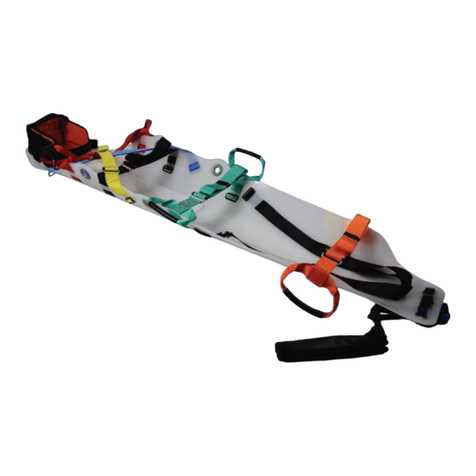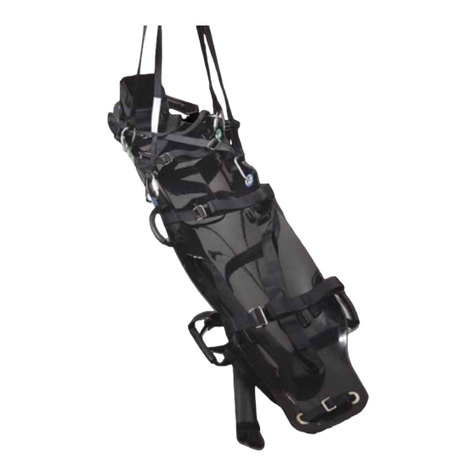Casualty Transportation
Casualties can be transported either sitting or lying in the sled, or if already in a Saviour
Stretcher, placed directly inside.
Each occupant of a sled should wear the appropriate PPE (Personal Protective
Equipment).
Weight must be distributed evenly: do not move about suddenly, all movements with persons in
or on the sled must be made deliberately and slowly. Check for in
water obstructions and avoid sharps at all times during use,
although tough it is made of fabric. Stability and handling problems
can occur if the operator(s) mishandle(s) the sled.
The carrying capacity must not be exceeded.
Black straps are provided at the head and foot of the sled to aid
stability and to tow, drag or stabilise the sled whilst moving the
device, particularly on low friction surfaces, such as water, mud,
grass, snow, marsh etc
The grey handles can be used to lift the sled, or assist with drag,
tow or stabilise.
White straps are provided to hold a person in the sled if required.
The white straps have quick release buckles to fasten, and also
have the ability to be removed from the sled via stainless buckles for
decontamination if required. If the person is already in a Saviour
Stretcher then these can be used to secure the stretcher into the
sled if required.
A person will, injury permitting, be placed in the orientation of the head towards the sign ‘HEAD’
and feet towards the ‘FEET’ sign. Due to the construction of the sled this generally provides a
slight head up or level position for the casualty when in use on water. If the person is in a
Saviour Stretcher and in the sled the interface of the stretcher and sled should give a head up
orientation. All this is of course dependent on circumstances and the build and or possible injury
suffered of the casualty. Should for any medical reason you require a head down position when
in use on water then reverse the patient and place the feet at the head end and vice versa – and
be monitored for effect. However, as with all good casualty handling no-one should be left in the
sled for any length of time or be unattended. This together with that the level of both the ground
being traversed and that of the sled on it should be carefully monitored.





























